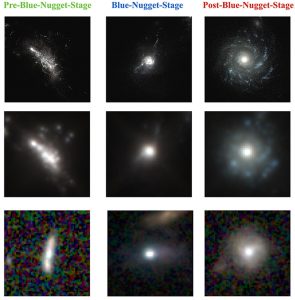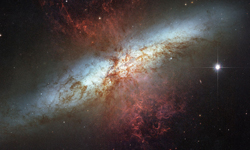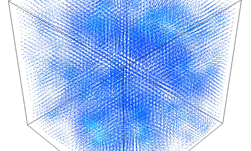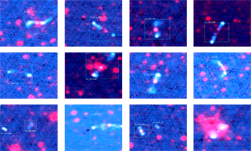A new study published in the Astrophysical Journal this week describes how a team of researchers from all over the globe developed a deep learning system that can classify galaxies with superb accuracy.
Using NVIDIA TITAN Xp GPUs and the cuDNN-accelerated Keras and Theano deep learning frameworks, the team, made up of researchers from institutions in the U.S., France, Jerusalem, Germany, and China, trained a convolutional neural network with mock images of simulated galaxies at three phases of evolution.
“Deep learning looks for patterns, and the machine can see patterns that are so complex that we humans don’t see them,” David Koo, a co-author and professor emeritus at UC Santa Cruz told the university publication. “We want to do a lot more testing of this approach, but in this proof-of-concept study, the machine seemed to successfully find in the data the different stages of galaxy evolution identified in the simulations.”

Once trained, the team tested their method using the TITAN Xp GPUs used during training to classify the different stages of galaxy evolution on images obtained through the CANDELS dataset, which uses images from the Hubble Space Telescope. The system achieved 80% accuracy in classifying the galaxies.
“We’re just beginning to explore this new way of doing research. It’s a new way of melding theory and observations,” Koo said. “It is thus timely to investigate alternative ways to extract a maximum amount of information from polychromatic images that might help break degeneracies with physics and improve the comparison between observations and simulated datasets,” Koo and the researchers wrote in their research paper. “This is precisely the goal of this work.”
The researchers say they will expand their work by using new simulated datasets and are hopeful their method could be adapted to other areas of astronomy.
Read more >
AI Classifies Galaxies using Hubble Space Telescope Images
Apr 24, 2018
Discuss (1)

Related resources
- DLI course: Getting Started with Deep Learning
- DLI course: Getting Started with Image Segmentation
- GTC session: Reward Fine-Tuning for Faster and More Accurate Unsupervised Object Discovery
- GTC session: Generative AI Theater: Fast-Track AI Development With NVIDIA APIs and NGC Catalog
- GTC session: Revolutionizing Vision AI: From 2D to 3D Worlds
- SDK: IndeX - Amazon Web Services









